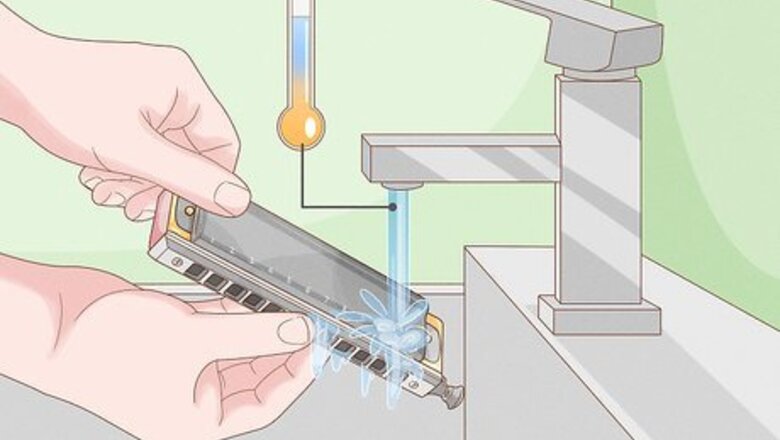
views
- For everyday cleaning and maintenance, rinse your harmonica out with lukewarm water and tap the water out of the holes (for plastic or sealed wood combs only).
- For a deep clean, disassemble the harmonica and wipe the cover plates with rubbing alcohol. Clean the comb with soapy water (plastic) or a brush (wood).
- Soak the reed plates in warm water and vinegar for 30 minutes, then gently brush off debris with a soft toothbrush.
Cleaning Your Harmonica Daily
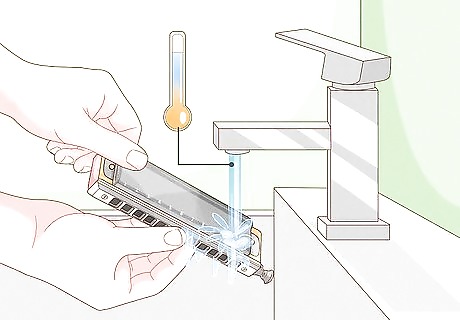
Rinse with lukewarm water. If you have a diatonic harmonica with a plastic comb, simply run some lukewarm water through the harmonica. Placing the mouthpiece against your palm, tap it firmly to remove the water. Only run water through the harmonica if your comb is plastic or sealed wood. If the comb is wooden or metal, do not run water through it.

Tap the harmonica after each use to remove saliva. Because a harmonica is played with the mouth, saliva and other contaminants get blown into the instrument. After each use, tap the harmonica on your hand, leg, or a towel with the holes facing down to knock out any loose saliva. This will help keep it clean and help reduce the amount of build-up in the instrument. Try to reduce the amount of saliva that you pass into the harmonica while playing (this will keep your tone from sounding “spitty” too).
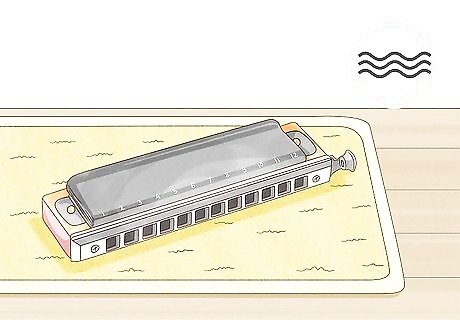
Let your harmonica dry after playing. Another way to keep your harmonica clean and rust-free is to let it fully dry after playing. When you place it in the case, leave the case open. This helps any moisture in the harmonica dry out instead of sitting there damp in your harmonica.
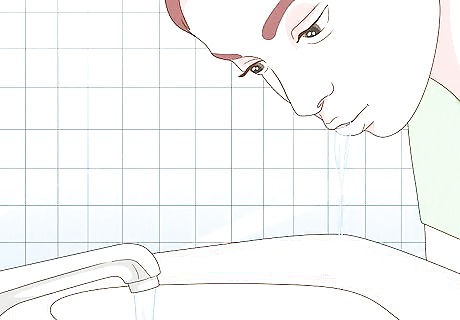
Clean your mouth before playing. If you have eaten or drank anything right before playing, rinse your mouth with water. Remnants of food can get blown into the harmonica, and sugar or other contaminants from non-water beverages can build up a residue in the harmonica. Do not play the harmonica right after brushing your teeth. Any residue left over from the toothpaste or mouthwash can build up, too. Don't smoke while playing the harmonica. Residue from the smoke can coat the reeds or reed plates, affecting the sound of the instrument.
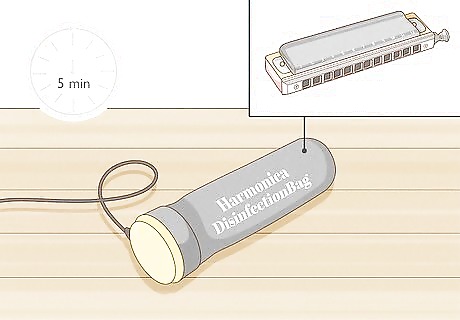
Use a UV disinfectant bag to eliminate germs and odor. If you notice a faint odor coming from your harmonica or want to disinfect it without taking it apart, let it dry completely after rinsing or playing and place the harmonica inside a specialty UV light sanitizing bag, like the Seydel Harmonica Disinfection Bag, for about 5 minutes. Ultraviolet light and ozone kill odor-causing bacteria, fungi, and viruses inside the instrument. Use the UV bag whenever you notice an odor or have shared your harmonica with another person. You likely won’t need to use it daily, but it will not harm the instrument if you do. Most disinfectant bags are silicone and rechargeable with a USB or micro-USB cord. Follow your product’s instructions. UV cleaners don’t remove debris.
Deep Cleaning Your Harmonica
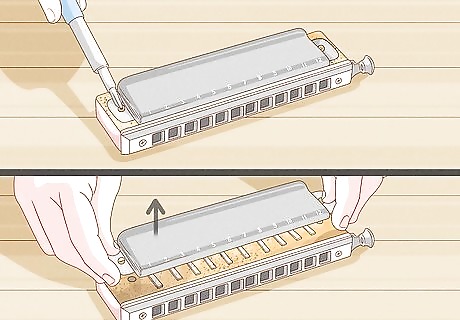
Remove the cover plates and wipe them with rubbing alcohol. Use the appropriate screwdriver to remove the cover plates of the harmonica. Some harmonicas use a Phillips-head screwdriver, while others use a flat head. Place the screws in a safe place where they won't be lost. Then, spray both sides of each cover plate with rubbing alcohol and wipe them dry with a clean, lint-free cloth.
Unscrew the reed plates. After removing the cover plates, use the screwdriver to remove the screws attached to the reed plates. Keep the screws in the order from which you remove them so they are placed back in the same hole as before. The reed plates are metal rectangles with different-sized slots covered by metal reeds (flat metal springs). The reeds vibrate as you inhale or exhale to create sound.

Soak the reed plates in warm water and white vinegar. Grab a shallow bowl or dish and fill it with enough warm water to cover the plates, then add a splash of distilled white vinegar (or lemon juice or citric acid). Let them soak for approximately half an hour. The water and acidic vinegar help soften and break down solid debris on the reed plates, making it easier to wipe away later.
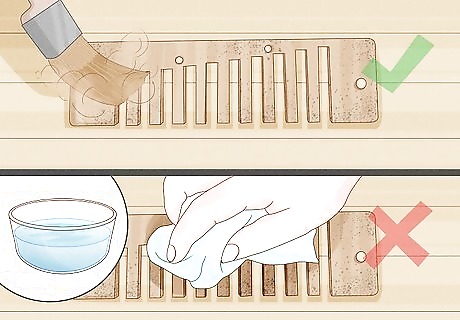
Clean the comb. While the reed plates are soaking, clean the comb. If the comb is plastic, clean it with soap and warm water. Use a soft toothbrush to brush the deposits off the comb. Or, spray the comb with rubbing alcohol and wipe it with a soft brush or cloth. Use something sharp, like a toothpick, to dig any build-up off the comb. If you have a wooden comb, do not use water or soap. Just use the brush or the sharp object. If you have a metal comb, dry it thoroughly before reassembling.
Clean the reed plates. Remove the reed plates from the water and use a soft toothbrush to gently brush them. Do not scrub the reed plates with lots of pressure. Instead, lightly brush the reed plates along the reeds from the rivet down. Don't brush against the reeds or snag the ends of the reeds (this can damage them or mess up the notes of the harmonica). Never brush across the reed. Only brush in the direction of the reed. Clean the other side of the reed plate as vigorously as you want since it has no reeds. Then run it under warm water to rinse. Alternatively, clean the reed plates with a cotton swab and hydrogen peroxide.
Let the harmonica dry fully, then reassemble it. Pat the harmonica as dry as you can with a clean cloth, then lay the pieces out in a safe spot so the small crevices air dry completely as well. The harmonica is ready to play as soon as it’s reassembled. Tighten all of the screws evenly before you tighten them as far as they can go.











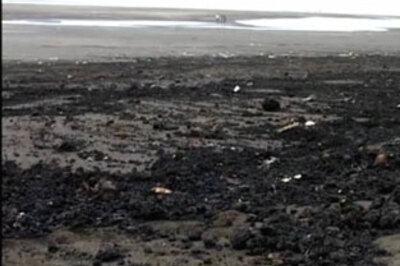




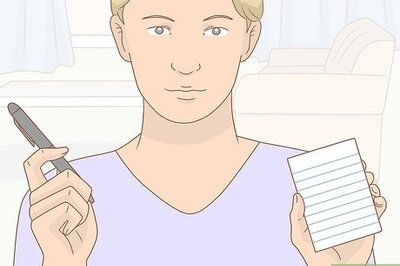

Comments
0 comment